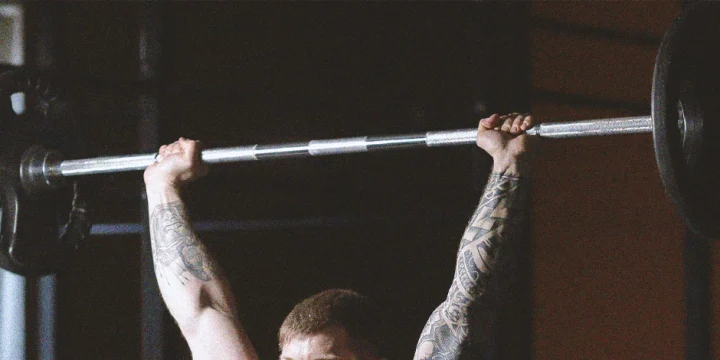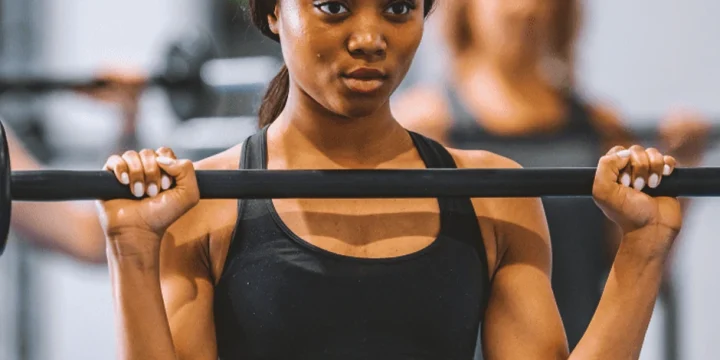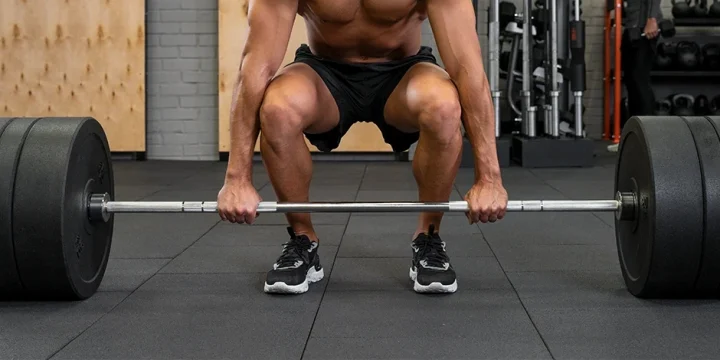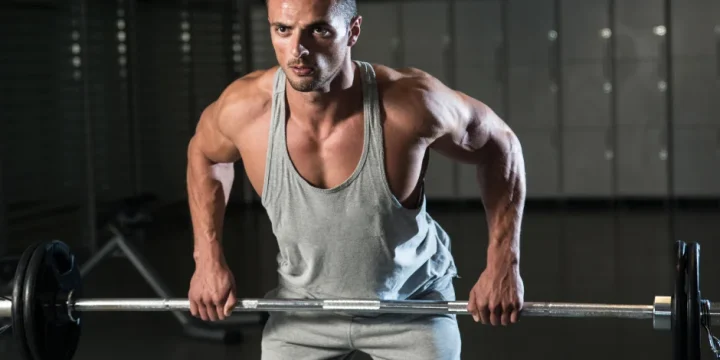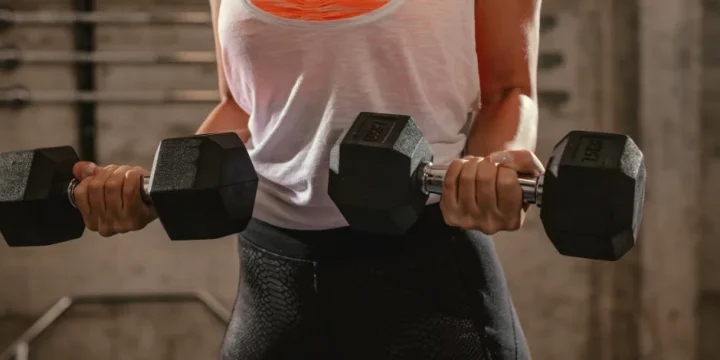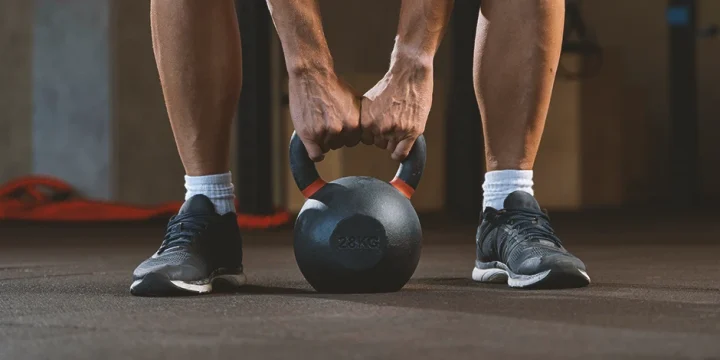Most bodybuilders tend to stick with free weights for their strength training, but there are really good reasons to occasionally use a dual cable machine, especially for working on your pecs.
One of my personal favorites is the standing cable chest fly exercise, but I see people make very common mistakes that can result in too much shoulder strain and even injuries.
So, I had a physiotherapist help me come up with the ideal setup and form to avoid such injuries and maximize the effect on muscle growth.
Here’s our simple step-by-step guide.
Quick Summary
- To perform cable flys, position yourself between the arms of a cable machine set at chest height, grasp the handles, step forward, and with slightly bent elbows, bring your hands together in front of you, then slowly return to the starting position.
- The cable chest fly should be performed with a proper stance and body position, ensuring safety and effectiveness by maintaining constant tension even at the starting point.
- According to the National Institute of Health, maintaining time under tension during cable flys maximizes hypertrophy, differentiating it from most chest exercises.
- In my experience, the standing cable chest fly is a versatile and joint-friendly exercise, ideal for targeted chest development and suitable for various fitness levels.
Step-By-Step Cable Flys Guide

Read these instructions carefully before you start doing the cable chest fly.
I always emphasize the importance of proper stance and body position when performing the cable chest fly. This ensures that the movement is not only safe but also highly effective.
Here’s what to do:
- Set up your favorite cable machine for a high cable fly so that the handles are at about chest height.
- Get into the starting position and stand with your back to the handles, with a slight bend in your knees for stability.
- Reach behind you, and grab hold of the handles, bringing them forward to about your shoulders.
- Step one foot forward to lean away from the machine to provide yourself with better balance and stability once you start the cable fly movement.
- Keep your elbows slightly bent, slowly pull your arms forward, and bring your hands almost together straight in front of you.
- Slowly release the tension back until your hands are behind your shoulders and you squeeze your shoulder blades together; this completes one cable chest fly rep and brings you back to the starting position.
- You should feel constant tension, even at the starting point, and this will help you increase the time under tension, which, according to the National Institute of Health, maximizes hypertrophy [1]. This makes it very different from most chest exercises.
The number of reps and sets you do will depend on your goals.
For bulking, I would recommend 3–4 sets of 6–10 reps, and that means loading up the weight stack.
For toning, you’d want to do about four sets of 15 reps of cable chest flys, which should also help shape your upper arms.
Avoid Common Mistakes

Here are some common mistakes I see people make with the standing cable chest fly:
- Bringing shoulder blades too close: To achieve proper shoulder blade stability, you don’t want to overdo your backward cable fly movement. Instead, bring your elbows slightly behind your back.
- Using momentum: Your upper body should remain perfectly still and not move forward and backward. If you start creating a bit of momentum with your body, you could strain your joints too much, which according to Mayo Clinic, will lead to a rotator cuff injury [2].
- Limiting the forward motion: To achieve the full and safe range of motion, you need to bring your hands almost together in front of you. Don’t stop short of this, as you won’t get the full benefit of cable chest flys.
“The rotator cuff is a commonly injured area. The most common injuries are strains, tears, and tendinitis.”
- Angela M. Bell, MD
What Chest Muscles Do Cable Flys Work?
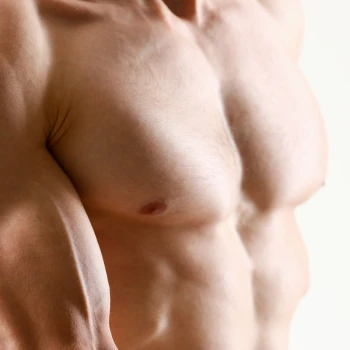
Cable flys work the pectoral chest muscles as well as the deltoids and core as secondary muscles.
With a properly executed repetition, you should feel maximum strain in your pecs right from the start to the top of the movement.
With a slight adjustment to the height of the cables, you can also transfer more of the strain to the upper and lower chest muscles.
But if you’re just starting out, then stick with the standard cable fly rather than trying to master an upward angle.
Benefits of Cable Flys
- Targeted Muscle Engagement: Cable flys specifically target the pectoral muscles, leading to focused chest development and definition.
- Joint-Friendly Movement: The exercise offers a smoother range of motion compared to free weights, reducing stress on the shoulder joints.
- Constant Tension on Muscles: Cables provide continuous tension throughout the movement, enhancing muscle stimulation and growth.
- Versatility in Angles: The adjustable heights of cable machines allow for varying the angle of the exercise, targeting different parts of the chest muscles.
- Improved Muscle Control and Stability: Performing cable flys requires and develops greater muscle control and stability, as the cables create a need for constant balance and coordination.
FAQs
Are Cable Flyes Good for Your Upper Chest?
Yes, cable flyes are good for your upper chest. Cable flyes work the full range of pectoral muscles and provide constant tension throughout the rep range.
Should You Cross Your Arms When Doing Cable Flys?
Crossing arms during cable flys is not recommended as it can lead to improper form and reduced effectiveness. It's better to keep arms parallel to ensure targeted muscle engagement and prevent potential strain or injury.
Should Beginners Do Cable Flys?
Yes, beginners should do cable chest flyes as part of their upper body routine. It’s a safe option and doesn’t require masting the safe handle of free weights if the strain becomes too much on the last rep.
Can You Get a Big Chest From Just Cable Flys?
While cable flys can contribute to chest development, relying solely on them for a big chest is limited. Incorporating a variety of exercises, including presses and push-ups, is essential for comprehensive chest growth and overall muscular balance.
References:
- https://www.ncbi.nlm.nih.gov/pmc/articles/PMC6950543/
- https://www.mayoclinic.org/diseases-conditions/rotator-cuff-injury/symptoms-causes/syc-20350225
About The Author
You May Also Like
